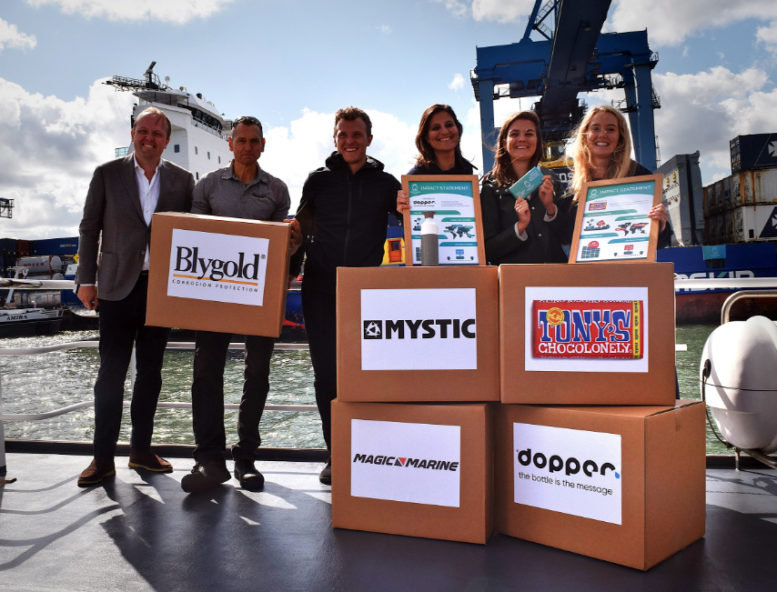In the Netherlands, the GoodShipping Program bunkered the first batch of biofuels into a container vessel that otherwise would have entirely run on fossil fuels. The first 5 pioneering cargo shippers to join the program are Tony’s Chocolonely, Dopper, Blygold, Magic Marine, and Mystic. Altogether, they avoided over40 tons of CO2 emissions and significantly reduced local emissions like sulphur, soot and black carbon because the biofuels replaced the Heavy Fuel Oil (HFO) that was being used.
In collaboration with GoodShipping’s partners, GoodFuels Marine and Samskip, the vegetable oil-bunker operation in September in the Port of Rotterdam was hailed a “great success.” The Samskip Endeavour is a container vessel that carries over 800 containers and normally runs on a combination of fossil fuels like HFO and Marine Gas Oil (MGO). It was bunkered with 22,000 liters of Hydro-treated Vegetable Oil (HVO ) made from used cooking oil (UCO).
This volume of fuel corresponds with the annual sea freight volume of GoodShipping’s 5 cargo shippers. The voyage will offset all of their carbon emissions from shipping for one year, without requiring them to make special arrangements for each shipment. GoodFuels Marine supplies the biofuels, and will replace the equivalent volume of HFO in the cargo vessels.
Blygold, which provides HVAC services, said that this was a great way to reduce environmental impact without interfering with business operations. “For a company like Blygold, where we work with freight forwarders for shipping our sea freight, it has always been difficult to minimize the impact of that part of our supply chain. GoodShipping makes this possible, with an easy and adaptable solution,” said Maarten van der Meer, Managing Director, Blygold International.
The 5 cargo shippers could claim to have significantly reduced local emissions like Sulphur Oxide (SOx), Nitrogen Oxide (NOx), and Particulate Matter (PM ). These emissions from vessels in port regions lead to over 60,000 premature deaths globally each year, according to researchers from the University of Delaware.
With this first HVO bunkering, GoodShipping shows that it is possible for cargo owners to influence the carbon footprint of the sea freight in their supply chain. Based on the principle of mass balance, any company can join the GoodShipping Program and have their sea freight shipped climate-neutral, and as well as significantly reduce local emissions. Following the program, Goodshipping is increasing demand and accelerating R&D in the field of marine biofuels.
The GoodShipping Program works on the premise that, as all CO2 from container shipping is emitted into the atmosphere, the means of mitigating these emissions is equally impactful, regardless of which vessels adopt biofuels over traditional bunker fuels – or the amount of biofuel that is added to the fuel tank, so long as it offsets the CO2 costs of transporting the participating shippers’ cargo. The Goodshipping Program, whose partners include Social Enterprise NL, DHL and NGOs Carbon War Room and Naturr & Miliu, is urging more companies to join the program ahead of the IMO’s 0.50% global sulphur cap by 2020.
